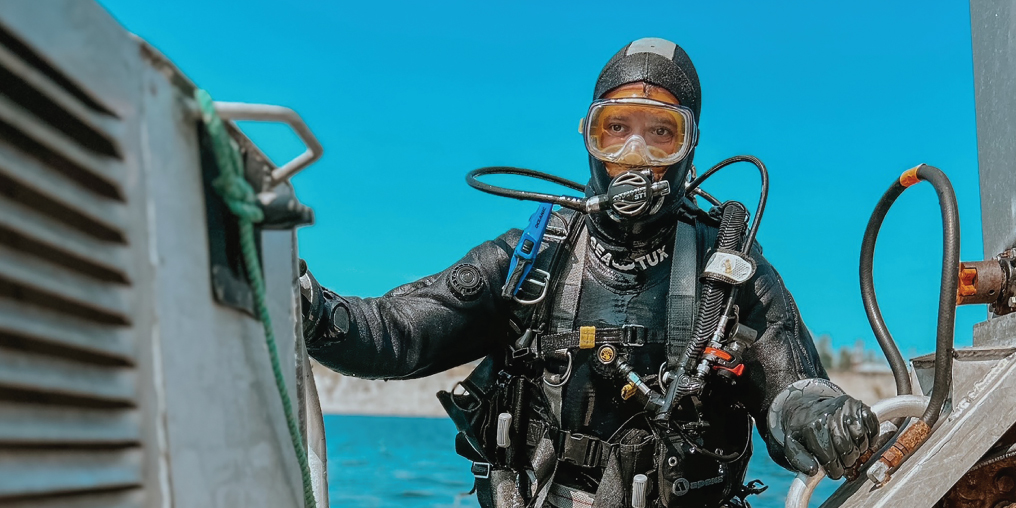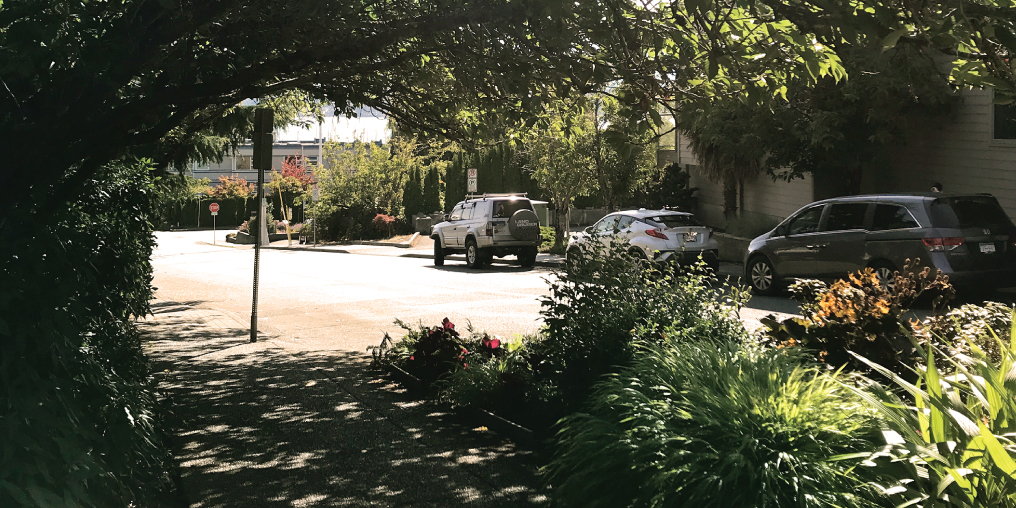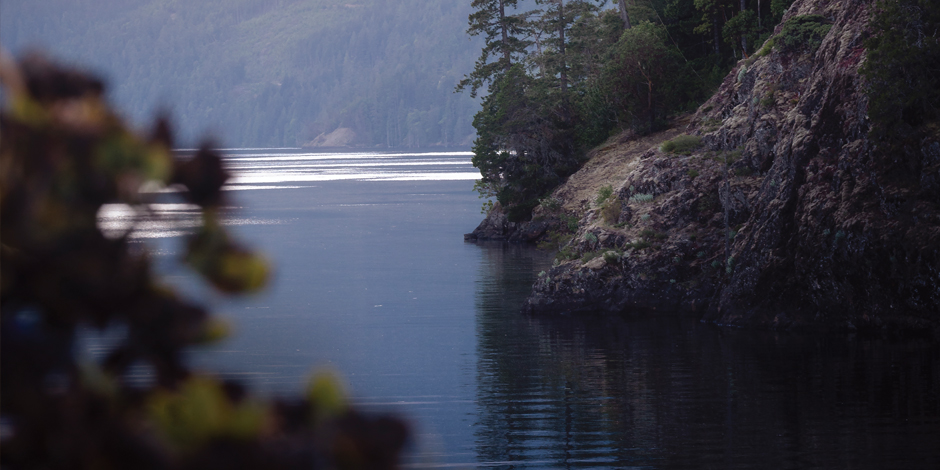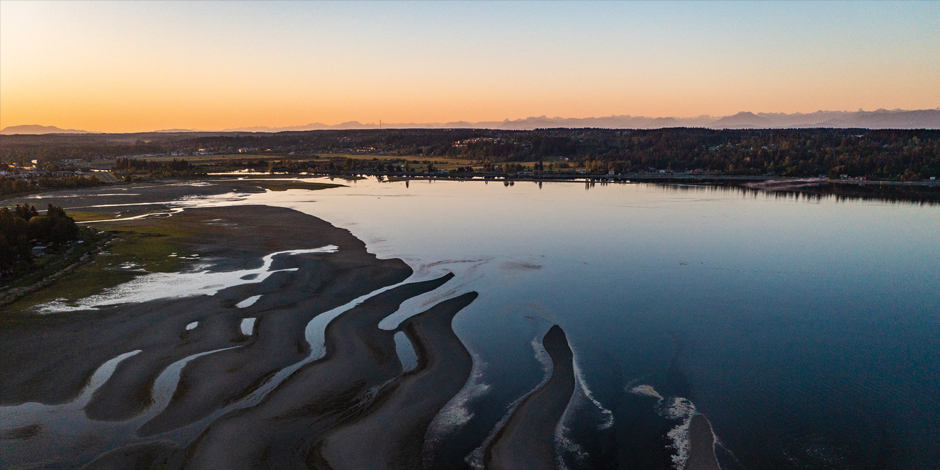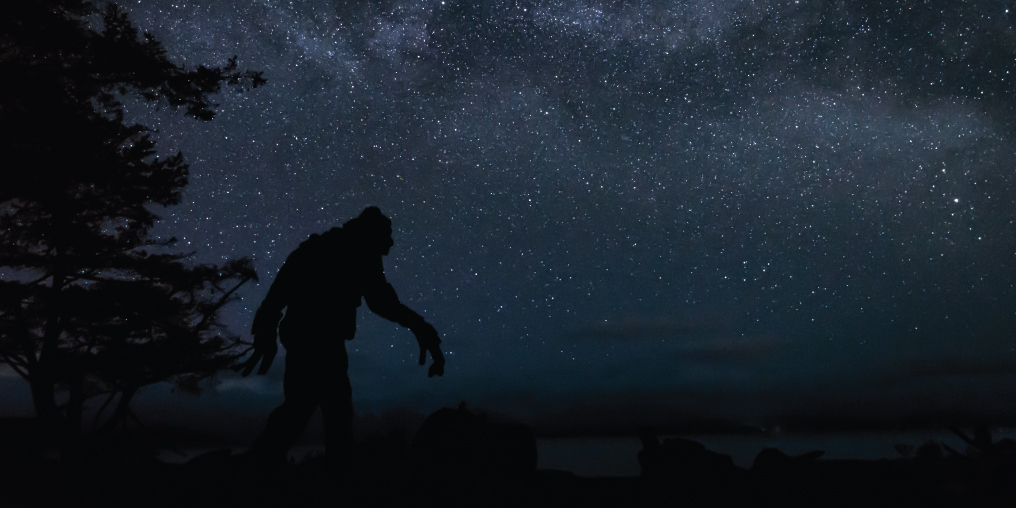In the fall and winter, most people don’t immerse themselves in the Salish Sea, but for geoduck divers, it’s harvest time. They dip below the ocean’s surface before the sun wakes; sometimes snowflakes are falling. They slowly climb the downline, ensuring the pressure releases from their bodies, until they reach the ocean floor 30 to 60 feet below. All becomes silent and they get to work. Hearing nothing more than their breath, they focus on the direction of currents and begin looking for telltale signs that wild geoducks are just below the sea floor. At the end of a good day, with favourable conditions, they will head to the packer with somewhere close to 2,000 pounds on board.
Geoduck—say what? Although this seafood (pronounced gooey-duck) comes from our waters, most of you reading this have never tasted geoduck—or maybe you’ve never even heard of it—but every year over 2.8 million pounds are pulled from the sea along our coast. This sounds like a lot, but it’s actually only two per cent of the total biomass of this giant clam. The geoduck fishery is highly regulated; beds are assessed regularly and harvested responsibly to ensure a long, sustainable industry. About 95 per cent of it is exported, so most Islanders never see it, but if our family has our way, that’s going to change.
Let me back up a bit and take you way back to the 1960s, when my future grandfather-in-law, George Dennis, a Nova Scotia man, was posted to New Brunswick. After learning to dive, he began doing search and rescue work. He was an Air Force man by day and a diver by night.
A decade and a few location transfers later, to his good fortune (and ours), he ended up in the beautiful Comox Valley. Here he continued with his passion for scuba, but now he was diving for seafood. Always an entrepreneur, he applied for as many permits as he could to harvest wild seafood: sea urchin, sea cucumber, and geoduck clams.
Dreaming of making a living from the sea, George took an early retirement from the Air Force. Pounds of harvested seafood in those days sold for cents on the dollar, so there was some hustle required, but also plenty of opportunity. It was hard work, and it quickly became a family endeavour. His wife Gloria became his tender, staying on board while he dove, and at one point or another all four of their children dove for geoducks with them. Grandma now talks fondly about sleeping in tents along the wild wet coast and getting up with the sun so George could climb back again into the chilly ocean.
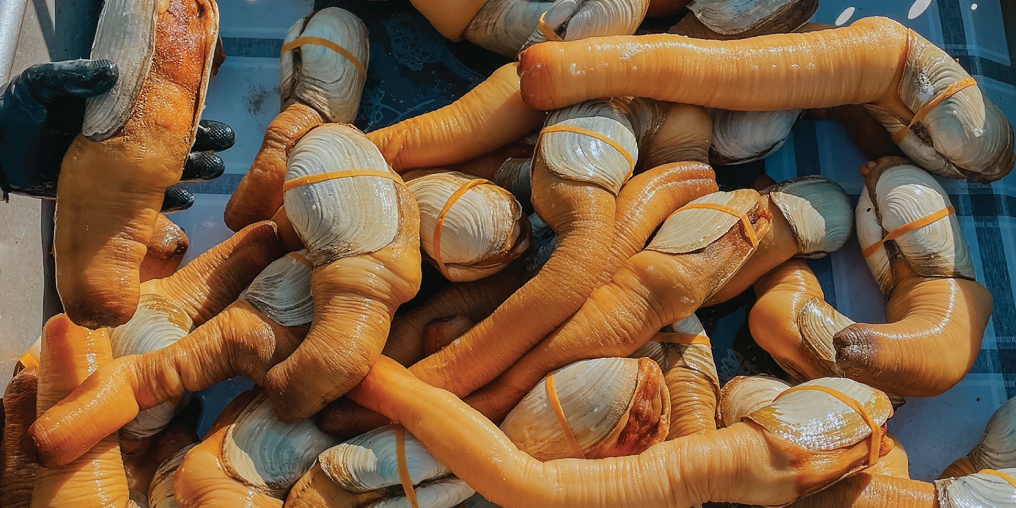
After 50 years of diving our beautiful west coast, George’s entrepreneurial dream has paid off, as wild geoducks are now in very high demand. It has long been a family affair: his son Glen is a diver, and now several of his grandsons, including my husband Jordan and his cousin Mike, are continuing his legacy. Jordan, Mike, Mike’s wife Bonnie, and I have recently launched Coast Seafoods with a mission to bring geoduck and other local seafood in a big way to the Canadian people. (We still harvest sea urchin and sea cucumber, too.)
So, you may now ask, what are geoducks? They are one of the world’s biggest kinds of clam, and we have them here in BC by the millions. But you won’t see one while you’re just strolling along the beach, because their bodies reside approximately two feet below the sand. At best you may notice a slight disturbance in the sand, or perhaps a pattern of small rocks. Occasionally a larger one will show just the tip of their incredibly long neck; this is called the siphon and it’s the crème de la crème of the ocean’s bounty.
If you ever do happen to see a geoduck in summer months, do not harvest or eat it! They are subject to paralytic shellfish poison (PSP), a natural toxin that can be very dangerous to humans. PSP levels are closely monitored, and the fleet shuts down when PSP levels get too high in warmer weather.
When PSP drops (usually in the fall and winter months), it’s go time for geoduck divers. The harvest of this seafood, although simple, is not easy, nor for the faint of heart. Divers are equipped with dry suits and weighted belts to keep them on the ocean floor; they carry high-pressure water hoses known as “stingers” that they use to blast the sand away so they can collect and bag the geoducks. It is not uncommon for them to run into other ocean friends, like a territorial sea lion getting too close for comfort or a giant Dungeness crab climbing their arm, but thankfully they are usually just curious.
For many years, the Island’s geoduck divers have sent away their catch on the packer boats that arrive daily. We’re aiming to shake things up a bit by also keeping some back and creating some delectable products for local consumption, because we fully believe there’s a place for this seafood on Canadian tables. But whether you try it or not, this third geoduck generation aims to keep on harvesting, because we are divers, and a love for the sea is deeply ingrained in us all.

